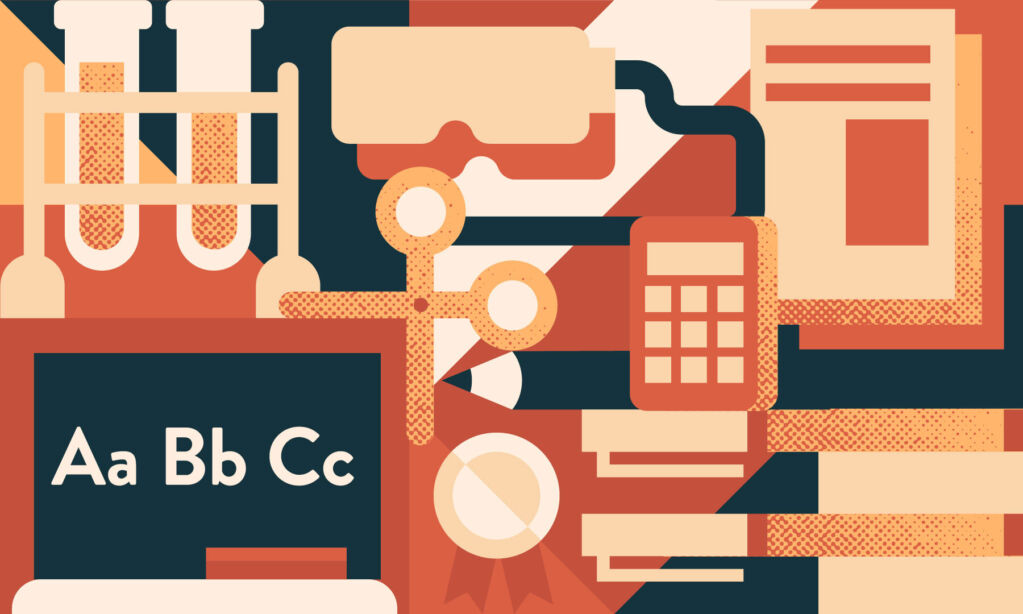Back in 2006 the Canadian Centre for Policy Alternatives co-published the report Who’s Calling the Shots? which assessed the presence of commercialization and private money in public education. It also noted what, if anything, provincial governments had done to either encourage or limit the corporate presence in classrooms. One thing we identified was that there was less marketing to kids in Quebec because of limits placed on direct marketing, and restrictions on incentive-based commercial programs in schools.
But we still identified lots of school fundraising, often to purchase things like desks and school supplies. And certainly no shortage of products that were definitely commercial in nature, though arguably not “actually” targeting kids (the sale of products in school like Coke and Pepsi, for example).
However, in the rest of Canada, there seems to be the lingering sense that, on the whole, there is greater public investment in Quebec, at least in education and child care. I graduated from McGill in the early 90s, when tuition— even for out of province students—was still $19/credit, and international students from French-speaking countries paid the same low domestic fees. Of course, that changed to a two-tier system shortly after I left, and now fees for out of province students hover above the Canadian average, and have been rising for in-province students as well.
It may come as a shock to people that Quebec’s level of public support for private schools (elementary and secondary) is second only to Alberta—and not by much.
To find out more I spoke with Anne Plourde, author of an upcoming report from IRIS, which looks at the current way in which public and private education is funded in Quebec, and the impact of this on school segregation in the province.
Erika Shaker, Our Schools Ourselves(OS/OS): Can you give us a quick lesson about how education in Quebec is funded?
Anne Plourde: As in the other Canadian provinces, in Quebec there are two parallel education networks at the elementary and secondary levels: a network of public schools and a network of private schools. In theory, public primary and secondary schools are entirely financed by public funds, and free education is guaranteed by the Public Education Act. Their main sources of funding are public funds paid by the Ministry of Education and school taxes collected by school service centers (former school boards).
However, despite the principles of free education, part of the revenue of the public school network comes from certain fees charged to parents (school supplies and materials, supervision of students during lunch hours, daycare services at the elementary level, etc.). In 2021, these fees represented 6.5% of the revenues of the Centre de services scolaire de Montréal, the largest in Quebec. Public schools also fund part of their activities and materials through fundraising campaigns very often involving private companies specializing in philanthropy.
Moreover, one of the peculiarities of Quebec is very high levels of funding for the network of private schools. Two-thirds of these schools are approved to receive public funds from the Ministry of Education. These grants amount to about 60% of those paid to public schools for educational services (they are higher in secondary than in elementary schools). The rest of the income for private schools comes mainly from fees paid by parents, but also from other private sources of funding such as donations or the sale of other goods and services.
OS/OS: Can you tell us more about your work in education generally?
AP: Over the years, IRIS has produced many publications on education. We have been very active in the debate on university funding and free education, and we have also been very interested in the commodification of higher education and the influence of neoliberalism in the way universities are managed. We have also published several research reports on preschool, elementary and secondary education, with a particular interest in the links between social inequalities and educational inequalities, as well as the place of the private sector in education and its consequences.
OS/OS: What trends were identified in 2017 when you did your earlier report?
AP: The 2017 report allowed us to measure the extent of the phenomenon of school segregation in elementary and secondary schools in Quebec, which effectively separates students based on their socioeconomic status and academic performance. This school segregation reproduces social inequalities and causes a homogenization of schools and classes which is particularly harmful for disadvantaged or struggling students.
School segregation is mainly caused by the competition between public schools and private schools for students (“market share”), competition which is much stronger in Quebec than in the other provinces. This is explained by the significant public subsidies enjoyed by private schools, which makes them accessible to a larger portion of the population.
Moreover, by attracting the best-performing students from privileged socio-economic backgrounds, private schools encourage public schools to develop specialized or boutique-type programs in an attempt to retain these students. These particular programs accentuate segregation even within public schools since they too are reserved for the most successful students and often involve significant costs for parents. Our study first showed that the phenomenon of school segregation experienced significant growth between 2001–02 and 2013–14. It also revealed that, while this phenomenon is present at the elementary level, it is particularly marked at the secondary level, which is consistent with the fact that private secondary schools are more subsidized than primary schools.
OS/OS: Did the analysis confirm your suspicions, or were you surprised by what you found?
AP: We knew that school segregation existed and that it was particularly relevant in Quebec because it had recently been denounced in a report published in 2016 by the Superior Council of Education. We also knew the negative consequences of these trends on student success, on social cohesion and on the reproduction of inequalities.
Nevertheless, the extent of the trend surprised us, particularly with regard to secondary schools. We observed that at the secondary school level, 21% of all students attended a private school in 2013–14, and 18% were enrolled in a particular program (private or public). In total, we estimated that more than 35% of secondary school students are enrolled either in a private school or in a particular public school program. And if we add to this the students enrolled in “special projects”, this proportion reaches 40%. Cut off from the best-performing students, public secondary schools and their so-called “ordinary” classes therefore find themselves with an ever-increasing concentration of disadvantaged or struggling students.
OS/OS: Why did you feel you needed to update the report, and what’s changed with/in this latest version?
AP: Five years after our 2017 study, we wanted to know if the phenomenon of school segregation had increased or if, on the contrary, it had diminished in Quebec. Our preliminary results demonstrate that it has not improved. In some ways it even got worse. Indeed, the proportion of secondary school students attending a private school remained the same, at 21%, while that of students enrolled in a particular program increased from 18% in 2013–14 to 21% in 2020–21.
We also carried out an analysis of the differences between private and public schools in the care of students with disabilities or with learning or adaptation difficulties. In this regard, our results confirm our hypothesis that private schools choose the “best” students, leaving out students with difficulties, who are thus concentrated in greater proportion in public school classes.
While the number of private school students represents 11% of total students (elementary and secondary included), these schools only accommodate 8.5% of students in difficulty or with disabilities. Conversely, public schools accommodate 90% of students in difficulty, while their students (with or without difficulty) account for 79% of the total. The result is that only 17% of students enrolled in the private network are students with disabilities or learning challenges, while they represent a quarter of students in the public system.
OS/OS: In a number of provinces, there’s significant concern that COVID-19 has facilitated the rise of privatization in schools. What, if anything, has the pandemic done to these trends in Quebec schools?
AP: The data analyzed does not allow us to know whether the pandemic has reinforced the phenomenon of school segregation in Quebec. However, considering the school closures and the many upheavals it has caused in schools and families, it can be expected that it has worsened educational inequalities. It would be interesting to see how the success rates of young people have evolved in the private network and in the public network, as well as in specific projects. We already know that they are systematically higher in private schools since they select their students, but we can expect the gap to have widened in 2020 and 2021 compared to previous years.
School Segregation in Quebec: The state of the situation will be published in September 2022, when the province’s school year begins.
Anne Plourde is a researcher at IRIS and a postdoctoral fellow at York University. Her areas of research focus on the relationship between capitalism, the State and social policies.







